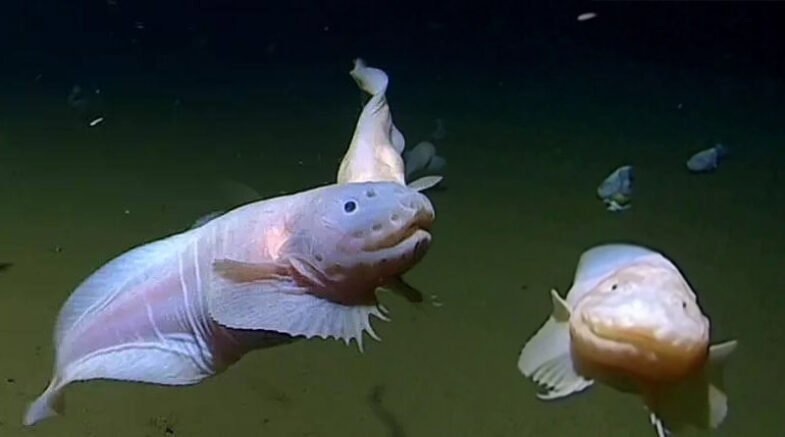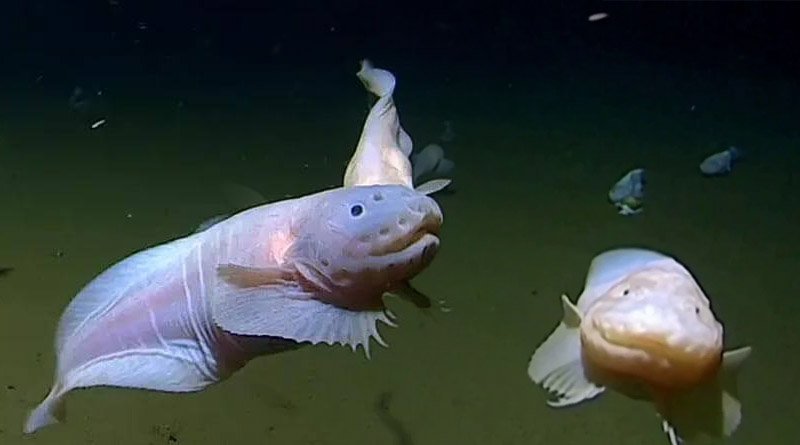The record was set when AUV captured footage of an unidentified species of snailfish from the genus Pseudiliparis during a dive in the 9,780-metre-deep Izu-Ogasawara trench.

A snailfish was captured on camera by researchers from the Tokyo University of Marine Science and Technology, Japan, and the Minderoo-University of Western Australia Deep Sea Research Centre at an altitude of 8,336 metres in the Izu-Ogasawara Trench, setting a new world record for the deepest fish ever seen underwater.
As part of a 10-year mission to study deep sea fish populations, the fish were discovered and caught during a deep-sea expedition to the Japan, Izu-Ogasawara, and Ryukyu oceanic trenches onboard the research vessel DSSV Pressure Drop in August and September 2022.
The record was set when an autonomous underwater vehicle (AUV) captured footage of an unidentified species of snailfish from the genus Pseudiliparis during a dive in the 9,780-metre-deep Izu-Ogasawara trench. Two days later, two Pseudoliparis belyaevi snailfish were caught in baited traps while exploring the 8,046-metre-deep Japan trench.
The bodies of snailfish are tadpole-shaped and range in size from 5 to 80 cm; they lack scales in favour of a gelatinous skin. 410 species of snailfish from 30 different genera are currently known, but it is believed that there are many more that are still undiscovered.
Snailfish, deepest fish ever seen underwater are found all over the world, but because they are cold-water creatures, they can only be found in the deep ocean near the tropics, where the temperatures are cooler. They can therefore dive farther than any other family of fish that is currently known.
Although the species seen at the time was never described, deep-sea snailfish sightings have previously been reported in the Mariana Trench as deep as 8,178m. Pseudoliparis swirei, the previous record holder for the deepest-living described species, was also discovered in the Mariana Trench.
While there is much more to these deep-water snailfish than just their depth—we have spent more than 15 years studying them—the deepest they can survive is truly astounding. Professor Alan Jamieson, the expedition’s leader and the centre’s founder at the University of Western Australia, said.
“We were finding them at deeper and deeper depths just creeping over that 8,000-meter mark in fewer and fewer numbers in other trenches, such as the Mariana Trench, but they are really quite abundant around Japan,” the researcher said.
Jamieson continued, “The Japanese trenches were incredible places to explore. They are so rich in life, even all the way at the bottom.” Victor Vescovo, who in 2019 drove his submersible, the Limiting Factor, to the bottom of Challenger Deep in the Mariana Trench, setting a new record for the lowest depth reached by a human, supported the mission.
During a dive to the bottom of the Sunda Trench, south of Bali, Vescovo is also credited with discovering a species of hadal snailfish that had not yet been identified.
